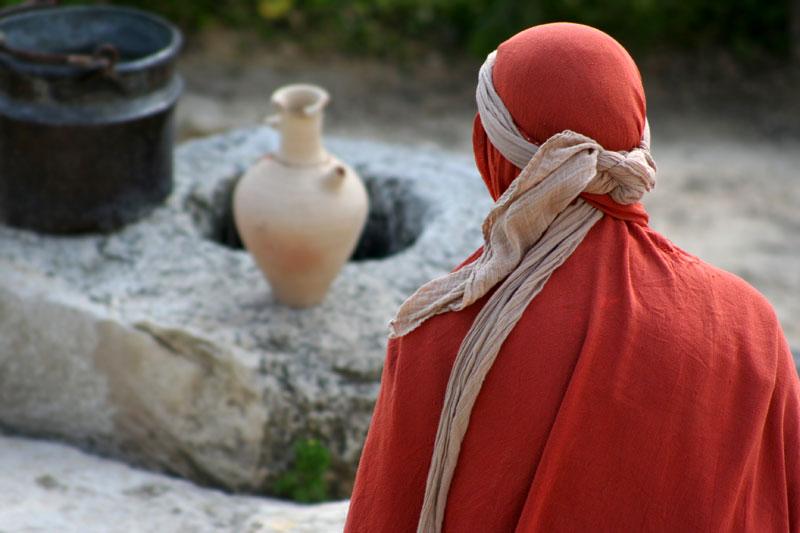
The Lost Tribes of Israel typically refers to members of the 10 Northern Tribes, known collectively as Israel, who were dispersed throughout the world as a result of Assyria's conquest in 722 B.C.E. Broader definitions include the two Southern Tribes, called the Kingdom of Judah, who scattered when Babylon overtook them around 586 B.C.E. and also those Jewish people who fled when the Romans destroyed the Lord's Temple in 70 C.E.
The Bible records the first two invasions and scatterings but not the latter, which occurred after Jesus' time on Earth. Except for the apostle John's contributions, the New Testament books were written before the scattering when the Romans quashed a Jewish revolt and razed the Temple.
The Assyrian Invasion
2 Kings 17:6 describes Assyria's 722 B.C.E. invasion of the North and the deportation of Israelites to other lands.
The king of Assyria invaded the entire land, marched against Samaria, and laid siege to it for three years. In the ninth year of Hoshea, the king of Assyria captured Samaria and deported the Israelites to Assyria. He settled them in Halah, in Gozan on the Habor River and in the towns of the Medes. —2 Kings 17:6
The areas listed in 2 Kings are believed to be within modern Syria, Iraq, and Iran. Not all members of the Lost Tribes of Israel were apprehended — many evaded captivity by fleeing to other parts of the world.
The Scattering of Judah
The 586 B.C.E. invasion of Judah came three months after 18-year-old Jehoiachin inherited the throne of Judah.
At that time, the officers of Nebuchadnezzar, king of Babylon advanced on Jerusalem and laid siege to it, and Nebuchadnezzar himself came up to the city while his officers were besieging it. Jehoiachin king of Judah, his mother, his attendants, his nobles, and his officials all surrendered to him. In the eighth year of the reign of the king of Babylon, he took Jehoiachin prisoner.
He carried all Jerusalem into exile: all the officers and fighting men, and all the skilled workers and artisans—a total of ten thousand. Only the poorest people of the land were left. Nebuchadnezzar took Jehoiachin captive to Babylon. He also took from Jerusalem to Babylon the king's mother, his wives, his officials, and the prominent people of the land. The king of Babylon also deported to Babylon the entire force of seven thousand fighting men, strong and fit for war, and a thousand skilled workers and artisans. —2 Kings 24:10-12, 14-16
When Nebuchadnezzar of Babylon attacked, he took captive only the most influential citizens of Judah. He brought to Babylon the well-educated and highly ranked, the most skilled tradesmen, creative artists, and all the fighting men. A few years later, Nebuchadnezzar returned to burn down much of Jerusalem and tear down the city's protective walls. He carried off most remaining inhabitants, leaving only the poorest to work the fields. (See 2 Kings 25:8—11.) This Babylonian Captivity lasted 70 years as the Lord told the prophet Jeremiah it would (Jeremiah 25:11).
Why doesn't the Bible mention "the Lost Tribes of Israel"?
Meanwhile, those from the Northern and Southern Kingdoms who had fled these centuries-apart invasions settled in other parts of the world. The Bible doesn't record their migrations or their lives in foreign lands. The concept of their being "lost" took time to develop as the world realized it didn't know what ever happened to them. They seemed to disappear entirely from history and, over time, acquired the name "the Lost Tribes of Israel."
However, they were never lost — not to themselves or God. Throughout the centuries, they have known they were the people of Israel, and God has always known where they are. In the last 75 years or so, these Jewish people groups scattered around the globe have been discovered. Though they know little or nothing of modern Judaism, they continue in the faith of their ancient forefathers, Abraham, Isaac, and Jacob. They practice Jewish traditions handed down from generation to generation and often endure persecution for their Jewish heritage.
Regathering the Lost Tribes of Israel
God has not forgotten these "Lost Tribes of Israel." He has promised in Scripture to gather them from the nations to where they have scattered and bring them back to the Land of Israel. (See Isaiah 11:11-12, 17:12, 43:5-6; Jeremiah 29:14, 31:10 and Ezekiel 11:17, 28:25 as examples.)
In that day, the Lord will reach out His hand a second time to reclaim the surviving remnant of his people from Assyria, from Lower Egypt, from Upper Egypt, from Cush, from Elam, from Babylonia, from Hamath and from the islands of the Mediterranean. He will raise a banner for the nations and gather the exiles of Israel; He will assemble the scattered people of Judah from the four quarters of the earth. —Isaiah 11:11-12
These promises are coming true as Jewish people from all over the world immigrate to Israel. It's called "making aliyah," which means "to go up" to Israel. In the heart of many, many Jewish people worldwide is the longing to "go home." Whether from New York City, South America, or remote Jewish villages in Africa, they desire the land they know is their heritage and home.
Today, we also see many Jewish people coming to faith in Yeshua (Jesus) — the Messiah promised in the Hebrew Scriptures. The physical ingathering of Jewish people to the Land of Israel and the spiritual gathering of Jewish people to God through faith in the given Messiah reveal that God is fulfilling His promises prophesied in the Scriptures. We at Jewish Voice have seen it firsthand.

Watch the Untold Story of the “Lost Tribes of Israel”
Unlock the “unsolvable” mystery and discover how the Lost Tribes and You are vessels for fulfilling biblical prophecy.





